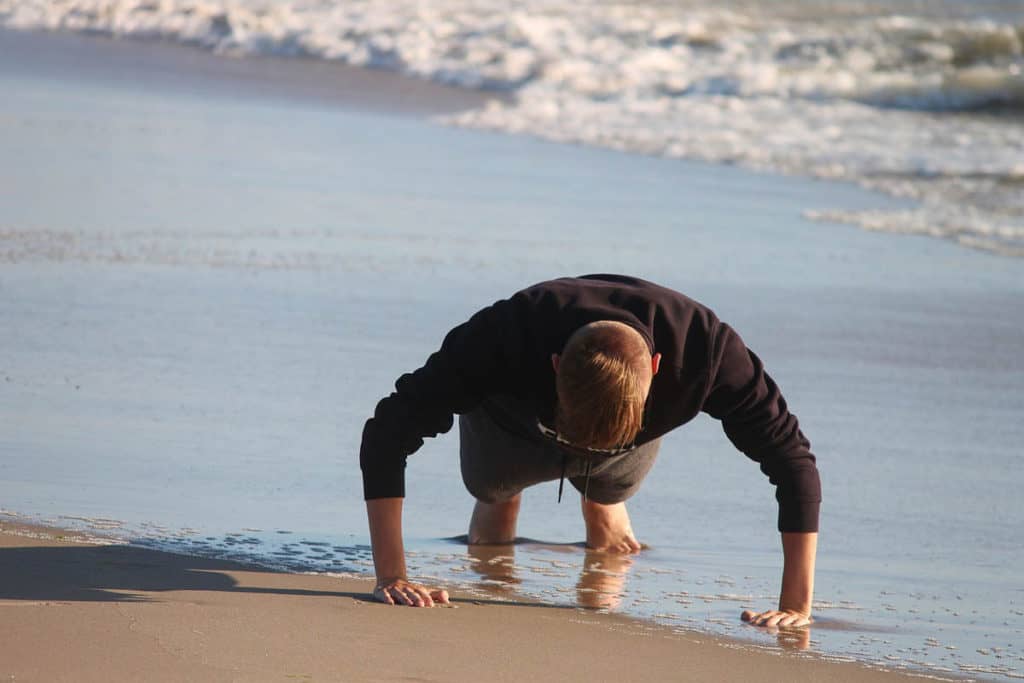Injuries can happen unexpectedly, and if you’re used to an active lifestyle, a cast is the last thing you want to weigh you down. However, that doesn’t mean you can’t stay active in a cast.
Whether your injury is the result of an accident or a medical procedure, a cast doesn’t mean the end of your active lifestyle. Exercises can be modified to suit your limited mobility and strength, so having a cast should not be an excuse to slack off from your daily exercise routine.
However, you have to make peace with a few things:
- You’re not going to perform your usual full-intensity workouts.
- You’ll need to be open-minded about trying out new things.
- Be ready for a long haul—you’ll need to balance your hunger for exercise with your body’s need for recovery.
Please remember that this is only temporary. The cast will come off eventually, but until it does, you may have to settle for a slower kind of workout regimen to give your body time to recuperate.
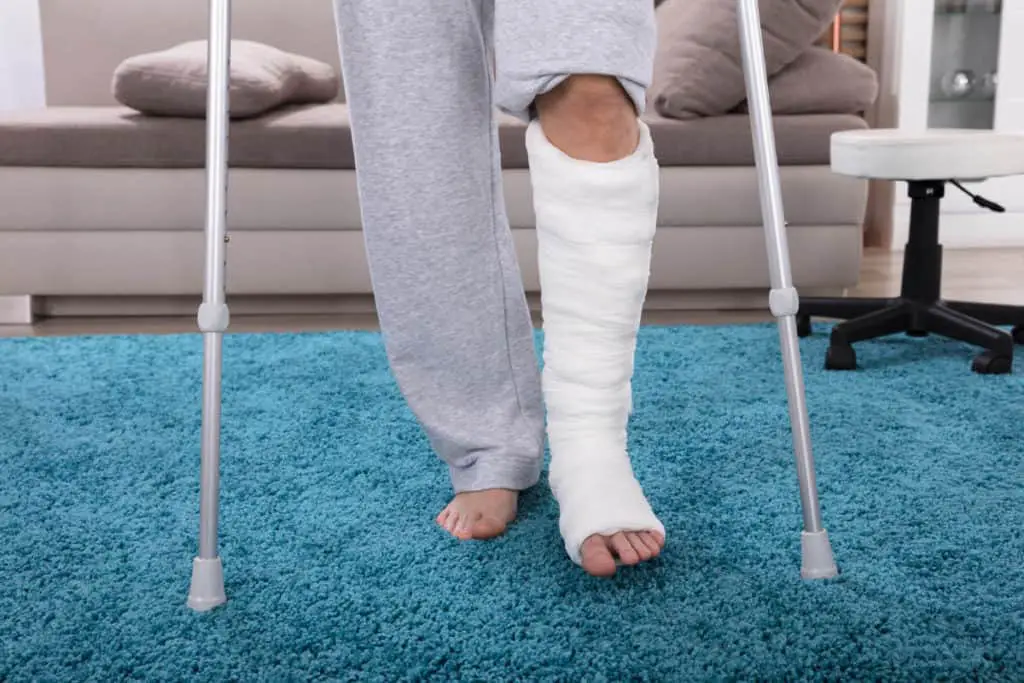
Coping Strategies to Help You Get Used to Your Cast
That cast can feel like a lead weight, and most people find it hard to get used to it quickly. There are a few coping mechanisms you can try to adapt to your slower, more careful active life. For instance, you can:
Talk to Your Doctor About it
After an injury, you can’t dive back into your active lifestyle without a green light from your doctor or physical therapist. Ask for exercise suggestions from them—they know which ones are good for you, and which ones may aggravate your injury. It is vital to establish your strengths and limits so that you can exercise without affecting your recovery process.
Manage Your Expectations
Just like it’s not easy to start exercising after a long period of inactivity, giving up your favorite sport or physical activity due to an injury can be difficult. It is best to adjust your mindset from early on.
First, accept that you are injured and that you need more rest and recovery than usual. Second, remind yourself that the problem is only temporary, but that if you push yourself, you might spend more time in a cast. Finally, let yourself re-learn how to perform basic exercises without the use of your injured body part
Reevaluate Your Goals
If your injury time eats into your fitness progress, it is necessary to adjust your goals. You can live without exercise for a few weeks—you can’t live without recovery time unless you’re ready to spend your life in a cast. Push your fitness goals just a little bit further to give yourself enough time to heal.
Realize That There Are a Lot of Ways to Stay Active
Sure, you might be used to running, or hitting the gym, or running marathons every so often, but that doesn’t mean you can’t get your activity fix from somewhere else. Exercise is not just about doing the most physically intense things; yoga is a testament to that. Through slow, deliberate, and balanced movement, you can accomplish a lot, fitness-wise.
Open your mind to as many other options as possible. There are numerous low-impact workouts you can do with a cast, including walking, chair yoga, resistance training (using resistance bands), swimming, and jogging.
10 Ways to Stay Active in a Cast
1. Do Some Stretches
Stretching your muscles is just as important when you don’t exercise as much as you used to. If the cast makes it impossible to move an entire limb, compensate by stretching the rest of your body thoroughly. If the cast doesn’t immobilize any joints (if it doesn’t cover your elbow or knee, for instance), then it is safe to stretch your arm over your head or your leg.
As your physical therapist will tell you, stretching is perfect for muscles that are out of commission due to a bone injury. It may reduce the atrophy and keep you relatively fit until your cast comes off.
2. Exercise While Seated or Prone
If you have a leg cast, you can still get some exercise done while seated or lying down. There are plenty of activities you can do without putting weight on an injured ankle, foot, leg, or knee. Most of these exercises target your upper body, while some improve your core strength.
Core strength is good for balance, which may be in short supply if you need a crutch to walk. Also, you don’t need your legs to lift weights, so there is still a lot of ways you can exercise even while carrying around a cast.
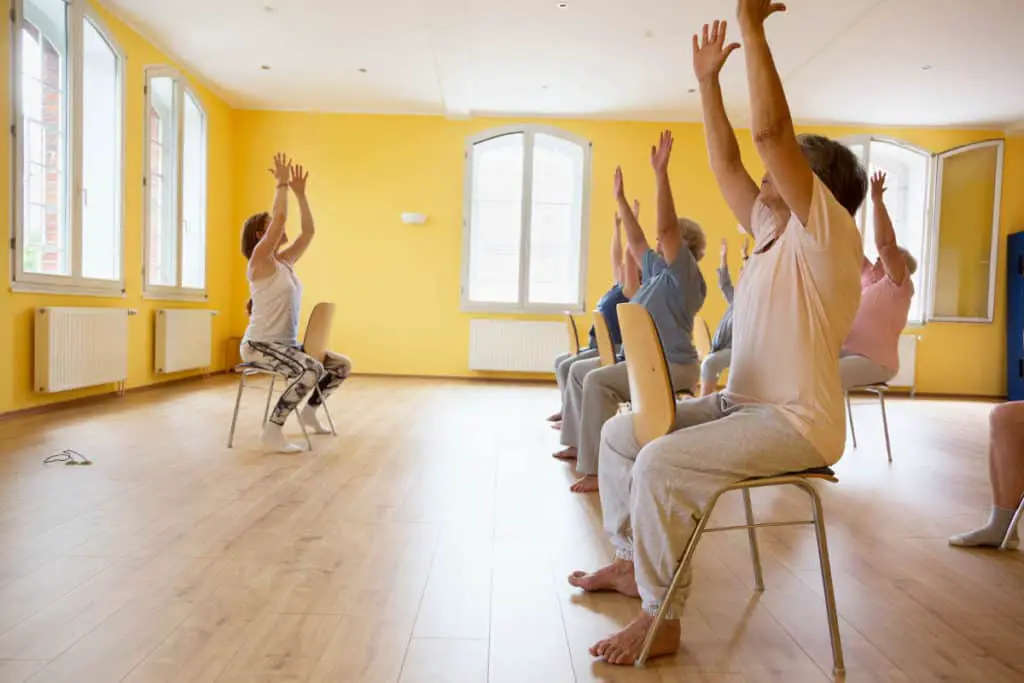
3. Make Use of Other Gym Equipment.
You see that section of the gym that you never visit because your routine never takes you there? Now is the time to get familiar with it. Avoid your usual spots and seek gym equipment that doesn’t require the use of your injured limb.
For example, if you can still walk, run, and balance well enough, a treadmill or elliptical machine is still within your range of use.
There’s nothing wrong with going to the gym in a cast. Just be mindful that the equipment you use and the activities you do are safe for your injured body part.
4. Walk
Whether it’s your arm or leg in a cast, the chances are that you can still move around a bit. If yes, then walking should be your new favorite activity.
Take walks as frequently as you can. Apart from walking, you can try lunges, squats, frog jumps (careful, these are not as easy as they sound), and other isometric exercises to keep your lower body fit. Even with one leg in a cast, you can take the occasional walk with crutches to get your heart beating.
Isometric exercises are also an option. If you can lift your leg in the air and hold it for 20 seconds, then you will maintain muscle tone and stop the muscles from wasting away. A few repetitions of this a day is enough to keep your injured leg in good health.
Remember, the worst exercise is no exercise, so no matter how little you can get done, it counts in a big way.
5. Get a Resistance Band.
If your physical therapist hasn’t already hammered this point into your head, then allow me to do it. A resistance band is a strip of thin rubber that you pull at in different positions to engage various muscle groups. That’s all there is to it.
It may not be safe to jump right into serious resistance training, but you can ease into it using a resistance band or two. You can wrap it around stair rails, doorknobs, or any other secure surface and pull on it to exercise a wide array of muscles.
The reason a resistance band is so helpful if you’re in a cast is that you can’t easily hurt yourself accidentally (unless it snaps and sends you reeling, which seldom happens). Plus, there is no heavy lifting involved, just some heavy pulling.
You can target specific muscle groups quite accurately if you use a resistance band, which makes it easier to keep your injured parts safe while working out.
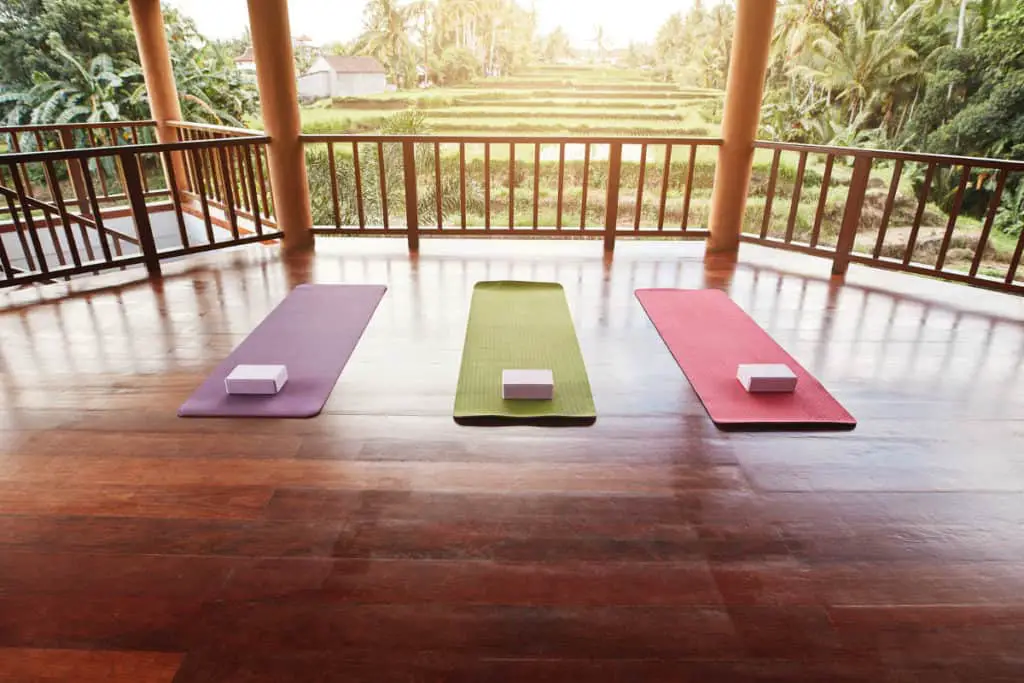
6. Yoga
One way or another, you’re going to need yoga if you suddenly find yourself wearing a cast. Yoga promotes flexibility, builds core strength, and gives your entire musculoskeletal structure much-needed stretching. Most importantly, yoga is an excellent tool for pain management, and when dealing with healing bone fractures, you will need as much pain relief as you can get.
How do you manage physical pain using yoga? It’s simple. Breathing exercises, coupled with relaxation practices, can help you deal with the occasional bouts of pain that come your way. Meanwhile, the mindfulness of yoga makes you more aware of your body, including what ails it, where the pain comes from, what exacerbates it, and what relieves it.
Yoga is such a versatile activity that it comes highly recommended for people with arthritis, who suffer immense pain from doing the most basic physical activities. For example, there is chair yoga, an iteration of the aerobic exercise done on a stable chair, which is a good option if you have a cast.
Yoga can also be practiced in a swimming pool (you will need a waterproof cast) or even in bed to reduce pressure on your weight-bearing appendages. It is an excellent exercise because you can tailor it to accommodate your physical limitations.
Related: 12 Reasons Why Chair Yoga is Great for Seniors
Related: Does Chair Yoga Help with Balance?
Related: How to Combine Gym Workouts And Yoga: Best of 2 Worlds
7. Strengthen Your Core
Whether it is your leg or arm in a cast, there is a chance that you can still perform a sit-up. When your limbs are out of commission, take the time to focus on your core. Exercises like sit-ups and straight-legged lifts will not affect your injured arm or leg, but they will undoubtedly give your abdominals that burn you crave.
Think of your injury as an opportunity to focus on other parts of your body. Provided the exercises you choose do not force you to move your injured body part around, you can get a lot done while lying on your back.
8. Get in Some Cardio
There’s no excuse not to get some cardiovascular training whether your arm or leg is broken. All you need is a bicycle, but if one or both your legs are indisposed, consider getting hand pedals instead.
You can also do something more old-fashioned, like running or dancing, if both your legs are still functional. If not, try some power-walking or free-weights to get your heart rate up at least once a day.
Cardiovascular endurance is crucial, not just for heart and lung health, but for muscle and bone recuperation. As little as 30 minutes of cardio a day drastically reduces the risk of heart disease, high blood pressure, and vascular disorders.
Related: Can You Run with a Broken Hand?
The picture was taken by Malcolm Slaney.
9. Join a Fitness Club
Right now, you’re probably feeling terrible about your condition, and the last thing you need to be is alone. Fire up the computer and look for a fitness club that caters to recovering and arthritic people. There are a few around; ask your physiotherapist for recommendations if you have to.
It helps a lot if you have a community behind you during your recovery period. Working out with a cast is a big adjustment that can only be made easier if you don’t do it alone. Plus, you will feel less self-conscious if you connect with other people going through similar struggles.
10. Hit The Swimming Pool – Depending on the type of cast you have!
Can you swim in a cast? Yes, you can, but it does depend on how the cast is made. You can get waterproof casts that allow you to go swimming. Waterproof casts usually cost more than traditional casts and may not be offered. The liners used in the waterproof cast do not degrade, unlike cotton liners, and allow the water to drain away
You can also get waterproof vacuum seals that can be placed over the cast to make them waterproof. However, before using them, it is best to check with your doctor. You buy these on Amazon.
Speak to your doctor or physician about waterproof casts and how to look after them. Please check which type of cast you have before going swimming.
Aquatic environments are the best places to begin testing out your ability to exercise. The weight of the water counteracts gravity so your injured bones and joints won’t suffer from every move.
Try some aquatic sports or activities like water dancing to gauge your balance and strength levels. If you can swim, then a couple of laps a day will do you a world of good. If not, walking across the pool in the shallow end is still an excellent exercise for your legs and core.
Swim classes have a ton of activities for people recovering from bone injuries. If you’re desperate for some action, start here as you’re more likely to find something safe but strenuous enough to satisfy your need for exercise.
How to Stay Active With an Arm Cast
Low-intensity, lower body exercises are the way to go. A lot of cardio is possible if you’ve still got use of your legs. Consider stationary cycling, walking, and some light jogging.
Use a lower-body machine if you need to strength train. Ideally, pick one that doesn’t require the handling of weights (some use a pin to adjust the weights).
For core strengthening, sit-ups and leg-ups are recommended. However, any plank exercise or other activity that requires you to use your injured arm should be off your list.
These exercises apply to people with shoulder injuries as well. Consult your doctor to learn whether your arm sling will get in the way.
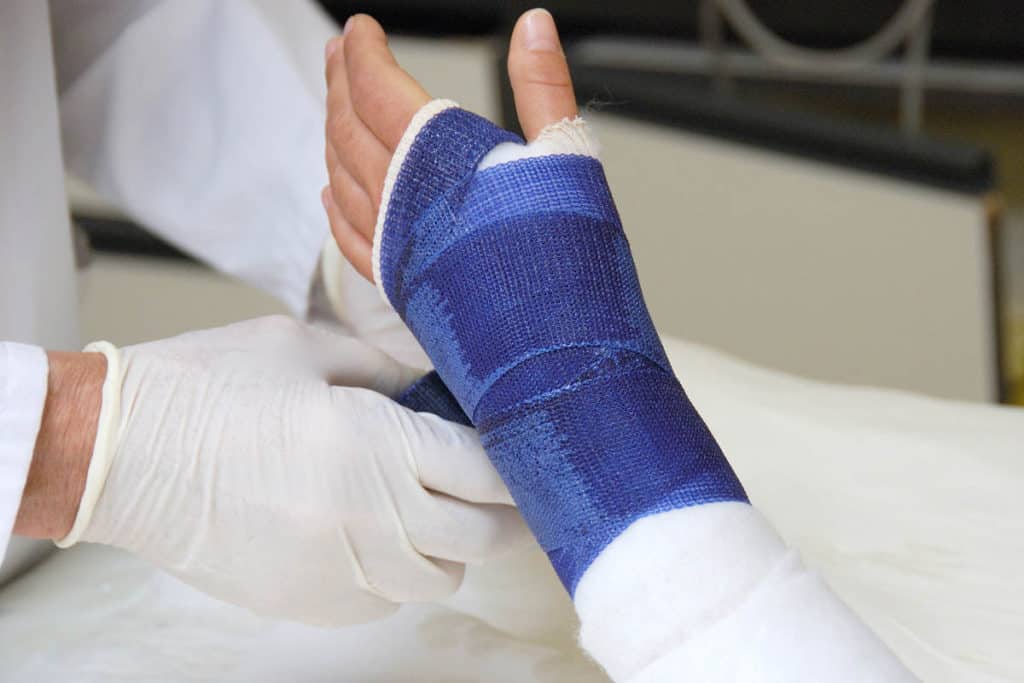
How to Stay Active With a Leg Cast
The first option is hand pedals, which are great for cardio. For strength training, get some dumbbells. Dumbbell exercises for seniors, arthritic people, and people recovering from injuries are entirely modifiable, so you can do it from a chair if you need to.
Be careful not to overdo it. Start with the lightest weights you have then move to the heavier ones as you get more comfortable. Don’t lift anything that might make you trip or drop it onto your injured leg.
Stretching is also a good exercise for people recovering from leg injuries. It helps you retain flexibility in your lower body. The position of the cast determines which kind of stretches you can do.
However, a universal stretching exercise you can try is seated straight-legged toe touches. It stretches your hamstrings and keeps your muscles from wasting away.
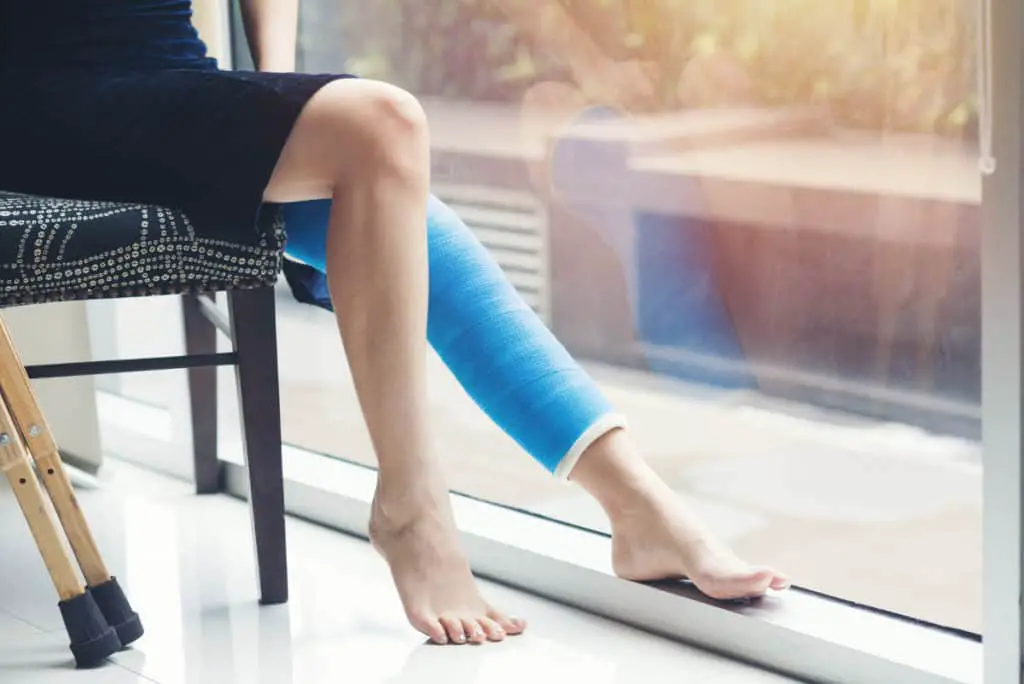
4 Tips For Living With a Cast
Living and staying active with a cast can seem like a tall order if you’re used to hitting the gym and moving around without a care. Now that you’re in this predicament, here is how to adapt.
1. Stay Positive
Often, your cast will feel like a heavy reminder that you’re not able to move like you’re used to. Don’t let it discourage you from doing the things you love. Focus on giving your body a chance to heal itself. Remind yourself that your ultimate goal is to get better.
2. Take it Easy
The healing process demands a lot of R&R (rest and recuperation), so your main priority is to relax and take it easy. This is not the time to break a new record at the gym or to be heavily involved in a team sport. The more you rest, the faster that cast will come off, so take your relaxation seriously.
3. Watch, Don’t Participate.
If you miss the gym, there’s nothing wrong with going there every once in a while. Just don’t do anything. Sit back and watch your gym friends going at it. If the doctor restricts any sort of strenuous activity, you will feel a little better if you can be a part of the camaraderie and gym interactions you had gotten used to.
4.Distract Yourself
Time seems to slow down to a grinding halt when you have nothing to do—all the more vital that you keep your mind occupied as often as you can. If you can’t exercise your body, exercise your brain with crosswords, books, and challenging puzzles.
Find different ways to satisfy your exercise urges if you can’t work out like you usually do. If you can, exercise with moderation, and prioritize your healing and safety over everything else.
Conclusion
Staying active with a cast is not impossible, but it is also not easy. You need patience most of all because if you’re not patient with yourself, you might aggravate your injury or cause another one.
Learn to listen to your pain.
Pain tells you that you’re doing too much of something or doing something incorrectly. Don’t ignore it and push on as many fitness enthusiasts want to do. An injury that requires a cast is a severe one by any standards, and you need to rest now more than ever.
Lastly, find the smallest ways to stay active around the house. It could be bouncing a tennis ball around, playing with your pets, kneading some dough, going up and down the stairs—it doesn’t have to be fancy; it just has to be deliberate.
An object in motion tends to stay in motion. That’s why being inactive for the first time in a long time may weigh down on you. However, by now, you know how to keep active despite your cast without affecting your recovery process.




